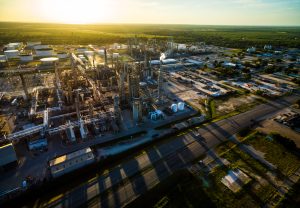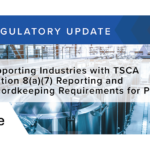Understanding Phase 2 Environmental Site Assessments
Phase 2 environmental site assessments play a critical role in Enid, ensuring that properties are safe and free from potential contamination. In this article, we will delve into the purpose of these assessments, their key components, and the regulatory framework surrounding them. Furthermore, we will explore the impact of these assessments on property value and public health, as well as the important role of environmental professionals in conducting them.
The Purpose of Phase 2 Assessments
The main objective of Phase 2 environmental site assessments in Enid is to investigate and assess the potential presence of hazardous substances or pollutants on a property. These assessments go beyond the initial Phase 1 assessment, which identifies potential areas of concern but does not provide conclusive evidence of contamination. Phase 2 assessments involve thorough investigation, sampling, and analysis to determine the extent and nature of contamination, if present.
Key Components of Phase 2 Assessments
Phase 2 assessments typically comprise several key components, each serving a specific purpose in the overall investigation. These components include:
- Initial Site Inspection
- Sampling and Analysis
- Risk Assessment
The initial site inspection involves a visual examination of the property’s physical characteristics and any potential sources of contamination, such as storage tanks or hazardous waste areas. This preliminary assessment helps determine the areas where sampling and analysis will be conducted.
Sampling and analysis are crucial steps in Phase 2 assessments, as they involve collecting representative samples from various locations on the property. These samples are then subjected to laboratory analysis to identify the presence and concentration of contaminants. The results provide valuable data on the nature and extent of contamination, aiding in the risk assessment process.
Risk assessment involves evaluating the potential risks posed by the identified contaminants. Environmental professionals consider factors such as exposure pathways, toxicity levels, and regulatory guidelines to assess the potential effects on human health and the environment. This assessment informs the development of risk management strategies and helps guide decision-making regarding the property.
Once the risk assessment is complete, it is important to note that Phase 2 assessments do not provide a conclusion or final determination of the property’s contamination status. Instead, they serve as a crucial step in the overall environmental due diligence process, providing valuable information that can guide further actions and decisions.
Furthermore, it is worth mentioning that Phase 2 assessments are not only important for property owners and potential buyers but also for the surrounding community. By identifying and addressing potential contamination issues, these assessments contribute to the overall protection of public health and the environment. They ensure that properties are safe for use and minimize the potential for exposure to harmful substances.
In conclusion, Phase 2 environmental site assessments are a vital tool in Enid’s efforts to maintain a safe and contamination-free environment. Through thorough investigation, sampling, and analysis, these assessments provide valuable data on the presence and extent of contamination, aiding in risk assessment and decision-making. Environmental professionals play a crucial role in conducting these assessments, ensuring that properties are safe and protecting public health.
The Process of Enid Phase 2 Environmental Site Assessments
The process of conducting Phase 2 environmental site assessments in Enid follows a systematic approach to ensure accurate and reliable results. This process typically includes the following steps:
Initial Site Inspection
During the initial site inspection, environmental professionals thoroughly examine the property, looking for potential sources of contamination and visually inspecting the surrounding area. This inspection helps them understand the property’s history, current conditions, and other factors that may influence the assessment process.
Sampling and Analysis
The next step involves collecting samples from various areas of the property, including soil, groundwater, and surface water. These samples are carefully collected, ensuring representativeness and minimizing any potential cross-contamination. The collected samples are then sent to accredited laboratories for comprehensive analysis, identifying the types and concentrations of contaminants present.
Risk Assessment
Once the laboratory analysis is complete, environmental professionals perform a thorough risk assessment. This assessment involves evaluating the identified contaminants’ potential risks to human health and the environment. By considering factors such as exposure pathways, toxicity levels, and regulatory guidelines, professionals can assess and manage the risks effectively.
The Role of Environmental Professionals in Enid
Environmental professionals play a crucial role in conducting Phase 2 environmental site assessments in Enid. Their expertise and qualifications ensure that assessments are conducted accurately, adhere to regulatory standards, and provide reliable results.
Qualifications of Environmental Professionals
Qualified environmental professionals possess the necessary education, training, and experience to conduct Phase 2 assessments competently. They often have degrees in environmental science, geology, or related fields. Additionally, they stay up to date with the latest industry regulations and advancements through continuing education and professional development.
Responsibilities of Environmental Professionals
Environmental professionals are responsible for overseeing all aspects of Phase 2 assessments, from initial site inspections to risk assessments. Their responsibilities include:
- Developing assessment strategies
- Collecting and analyzing samples
- Conducting risk assessments
- Providing recommendations for risk management
- Preparing comprehensive assessment reports
By fulfilling these responsibilities, environmental professionals ensure that property owners, potential buyers, and regulatory agencies have accurate, reliable information regarding potential contamination and associated risks.
Impact of Enid Phase 2 Environmental Site Assessments
Phase 2 environmental site assessments in Enid can have significant impacts on the local community, property value, and public health. Understanding these impacts is crucial for all stakeholders involved.
Influence on Property Value
Accurate assessment of potential contamination and the implementation of appropriate risk management strategies are essential for maintaining property value. Properties with clean bill of health are likely to retain or increase their value, while those with significant contamination issues may experience declines. Buyers and investors heavily rely on Phase 2 assessments to make informed decisions and assess the long-term financial implications.
Implications for Public Health
Phase 2 assessments help identify potential risks and provide guidance on risk management strategies to protect public health. By assessing contamination levels, determining exposure pathways, and implementing remediation measures, environmental professionals contribute to the overall well-being of the community. Timely and accurate Phase 2 assessments ensure that potential hazards are addressed, minimizing risks to human health.
Regulatory Framework for Phase 2 Assessments in Enid
Phase 2 environmental site assessments in Enid are subject to a regulatory framework comprising local, state, and federal regulations. Familiarity with these regulations is essential for conducting assessments in compliance and ensuring accurate results.
Local Environmental Regulations
Enid has specific local environmental regulations that outline the requirements for conducting Phase 2 assessments. These regulations may include guidelines for sampling procedures, analysis methods, and reporting formats. Environmental professionals must adhere to these local regulations to ensure their assessments meet the required standards.
State and Federal Oversight
In addition to local regulations, Phase 2 assessments in Enid are subject to oversight from state and federal agencies. State agencies, such as the Oklahoma Department of Environmental Quality, may have additional requirements and guidelines. Federal agencies, such as the Environmental Protection Agency (EPA), oversee certain aspects of environmental site assessments, including the cleanup of hazardous substances under the Comprehensive Environmental Response, Compensation, and Liability Act (CERCLA).
In conclusion, Phase 2 environmental site assessments are vital in Enid, protecting the community, property value, and public health. By understanding the purpose, key components, and process of these assessments, as well as the role of environmental professionals and the regulatory framework surrounding them, stakeholders can make informed decisions and ensure a safe and sustainable environment for all.
If you’re ready to ensure your Enid property is thoroughly assessed for environmental risks and compliance, look no further than ESE Partners. Our team of skilled environmental engineers and scientists is equipped to handle the complexities of Phase 2 Environmental Site Assessments, offering innovative solutions and sustainable approaches to environmental challenges. With our commitment to improving community quality of life and delivering opportunity to stakeholders, ESE Partners is your trusted partner in environmental problem-solving. Don’t hesitate to safeguard your property’s value and contribute to public health. Request A Proposal today and move your business forward responsibly with ESE Partners.









